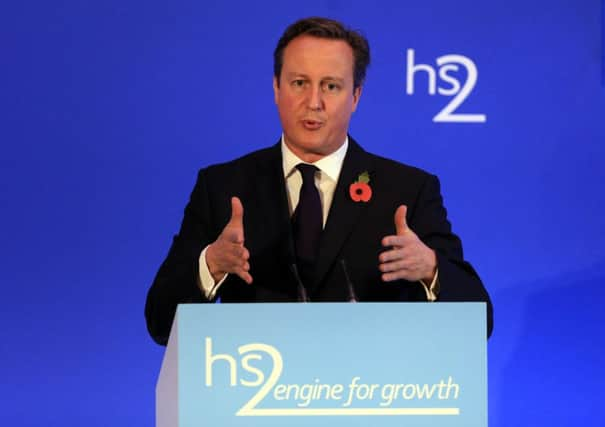‘Numbers did not add up on HS2’


A damning report from the National Audit Office has revealed how failings in the Department for Transport’s number-crunching mean some Whitehall decisions were made using “unrealistic analysis”.
Findings published today reveal how the department failed to recognise errors in its original analysis when touting the benefits of HS2 – which said that every £1 spent on the scheme would bring £2.40 to the economy – despite the fact it was much bigger than other projects.
Advertisement
Hide AdAdvertisement
Hide AdIt was only later that the DfT identified its mistakes, which meant some benefits had been counted twice, and reduced the ratio, the NAO found. The figure was then reduced to £1.40 for every pound spent.
The news is likely be a source of embarrassment for Prime Minister David Cameron and Chancellor George Osborne which began with them giving the green light to the second phase of HS2.
They were in Leeds on Monday to unveil plans for a new multi-billion pound east-west line, dubbed HS3, designed to slash journey times and improve connectivity between northern cities.
Mick Cash, general secretary of the transport union RMT, said: “Due to the continuing shambles at the DfT, and a chronic shortage of core in-house skills, a whole army of consultants, analysts, accountants and other private operators are making a killing out of essential rail projects that are absolutely key to meeting the continuing surge in demand for rail travel.
Advertisement
Hide AdAdvertisement
Hide Ad“From delays to upgrades and electrification, the chaotic approach to urgent fleet replacement and the general slow progress which make the words ‘high speed’ sound like a sick joke, Britain’s railways have been left in the slow lane while other parts of Europe race ahead.”
The report, which is likely to bolster the arguments of anti-HS2 campaigners, says the DfT failed to scrutinise its output, or recognise the limitations of its analysis, before making it public.
A failure to recognise changes in passenger behaviour when calculating initial estimates for the economic benefits of high-speed rail was also highlighted.
It said: “The report went on: ‘It (the DfT) has subsequently revised its business case to include new evidence on the value of business travellers’ time and has a programme of further research to understand how passenger behaviour has changed now that new technology is available, such as laptops, tablets and internet connections on trains’ .”
Advertisement
Hide AdAdvertisement
Hide AdIn a further blow to Mr Osborne, the NAO highlighted inconsistency in how much private sector cash will be needed to make the project a reality.
The report went on: “On HS2 there remains uncertainty as to how much private sector contribution the Treasury is seeking and for which elements it would wish others to pay.”
A spokesman for the DfT said: “We welcome the NAO’s findings about improvements in our sponsorship of major rail infrastructure programmes as part of our long-term economic plan.
“There are no new findings in this report. Our own checking processes uncovered these errors a number of years ago. We have been completely open about these.”